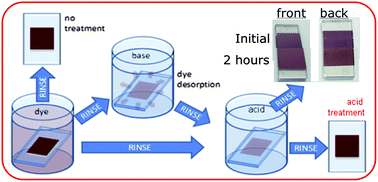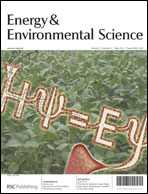Recombination rates through bare, partially dyed, and fully dyed mesoporous TiO2 films have been measured, as well as the penetration kinetics of dye molecules into the films. We give evidence that homogeneous partial dye coverage cannot be achieved by short dyeing times or dilute dye solutions, due to the high sticking coefficient of the dyes on TiO2. A new method has been developed which gives homogenous partial dye coverage, based on full dyeing followed by partial desorption. Using this method we show that dyeing with N719, C101, or TG6 dyes provides only minor blocking of recombination, relative to bare TiO2. We also show that recombination rates across the bare TiO2 surface can vary strongly after treatment with mild base, acid, or a Lewis acid/base buffer. We find these treatments can change the density of trap states as well as the conduction band edge potential. We present a method, based on charge extraction, that corrects for changes in trap density when estimating shifts in the conduction band potential. The combined results suggest that the industrially favored fast dyeing procedures can lead to higher recombination rates, especially in the absence of the typical TiCl4 treatment, and under low (e.g. indoor) light levels. The results also explain some anomalous features seen in studies of exciton and hole conduction along partial coverage dye layers which were previously assumed to be homogenous.

You have access to this article
 Please wait while we load your content...
Something went wrong. Try again?
Please wait while we load your content...
Something went wrong. Try again?


 Please wait while we load your content...
Please wait while we load your content...